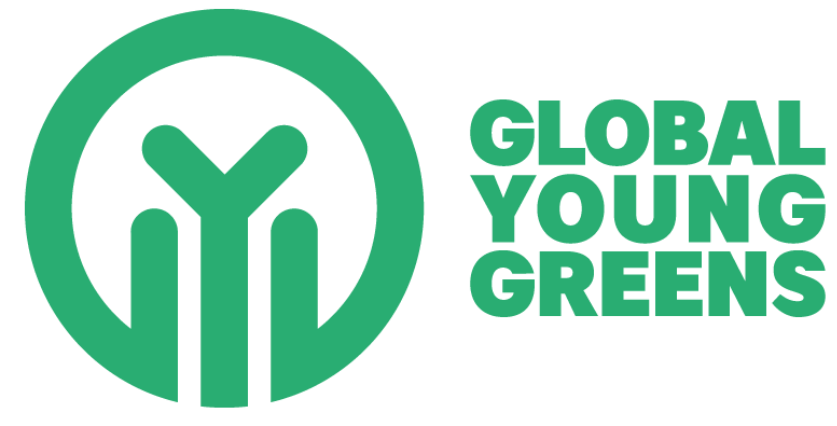“Organisational Principles
of the Global Young Greens”
(as adopted in Nairobi 2007 and amended in Berlin 2010)
1. Name
Global Young Greens Network (in short, GYG network or simply GYG).
2. Definition
The GYG is a world-wide non-profit network of young green activists and organisations committed to the GYG objectives and the GYG statement of principles, loosely affiliated to the Global Greens and endorsing the Global Greens Charter (see annex).
3. Membership
Every young person of the age of 35 and under or any youth organisation or political youth wing (Member Organisation) defining itself as “Green” and which obeys the Principles laid out in the Global Greens Charter is invited to join the network and participate in its activities.
Members of the network must not act against the spirit of the Global Green Charter, the Principles of GYG and they must try to cooperate with other GYG and Global Green members. Neither GYG logo nor name can be used for electoral competition or any other activity against any other GYG and Global Green members.
Member Organisations must clearly define themselves as a youth organisation. Individuals and delegates of Member Organisations who wish to be involved in any decision-making processes during the Congress must have formally completed the application process at least 24 hours before the commencement of the Congress.
The network, its facilities and activities are open to everybody, unless excluded from participation by the Congress on recommendation and in consultation with the relevant regions.
The Steering Committee decides on requests for new membership and carries out an audit of all Member Organisations between Congresses. New members have voting rights at the next congress after being confirmed as members by that same congress. Individuals and Member Organisations’ membership and participation can be temporarily suspended until the next GYG Congress if the Steering Committee decides they have acted against the letters or spirit of the GYG. The final decision will be taken by the Congress.
Members can only represent GYG by using GYG material on behalf of the network. Members must not make political statements on behalf of GYG unless the statement has been previously agreed by Congress.
4. Organisational Structure
The GYG aims to keep its structure flexible and open to changes. Activists and members are invited to expand and adapt the network according to their needs and in conformity with the principles of the GYG. Project and issue-based leadership and campaigning are given priority. The formal structures of the GYG network have mainly two tasks: ensuring overall coherence, coordination and guidance, and provide backup when other grassroots structures fail to work and acting as the global organisation.
The GYG network is based on two main pillars:
- people-to-people contacts
- a web-based community
Regular activities in the first pillar can include seminars, exchanges, regional and interregional projects, internships, summer camps, campaigns as well as the statutory meetings and any other useful tools.
Regular activities in the second pillar can include interaction, discussion, decision-making, common work, lobbying and learning via web-based tools, inter alia email lists, wiki, knowledge and data bases, e-seminars and any other useful tools.
The Steering Committee and Working Groups shall ensure a regular, well-mannered operating of this pillar. GYG will work towards improving its capacity in supporting all members in their possibility to participate in the web-based community.
4.1 The Regions
The regional federations are the backbone of the GYG. The four regions recognised are Africa, the Americas, Europe and Asia-Pacific. When appropriate, the addition of a Middle East region would be desirable for GYG. It is desirable for these regional federations to become the youth wings of their respective Green federations. The specific relationship is up for the regions to decide.
A new regional federation or a split of existing ones has to be approved by a Congress. Between Congresses, the Steering Committee has to take care of appropriate inclusion. Strong regions have the responsibility to support weaker ones by all possible and desired means. Member Organisations shall support their regional federations. The regions assure the link between the global and the national level. They are the first contact point for interested newcomers and the main implementing mechanism.
4.2 The Congress
The Congress is the highest decision-making body of the GYG. It aims at meeting at least every third year. It is convoked by decision of the Steering Committee. This decision will be communicated and published at least six months in advance of the Congress by the Steering Committee to the GYG members and the public. Every Green activist is invited to join the Congress as an observer. The Congress aims at gender balance.
The Congress decides in particular about:
- membership in the network
- the broad political guidelines and basic documents of the network
- the appointment and discharge of the Steering Committee
- the main activities and work programme
- common campaigns that carry the GYG logo
- restructuring of GYG
- Congress has to approve GYG previous years balances and future budget
4.3 The Steering Committee (SC)
The Steering Committee is the second highest decision-making body. It steers the network and is financially responsible for the GYG. It takes decisions in between the Congresses in order to carry out the decisions of the Congress.
The Steering Committee is allowed to issue political statements on behalf of GYG after appropriate consultation with its Individual members via the GYG Email-list, Member Organisations and regional federations. Statements have to follow the spirit of the Global Greens Charter and can only be released after obtaining consensus in the Steering Committee.
The Steering Committee is responsible for close communicating with the Global Greens and its Secretary. The SC takes financial decisions including the annual budget (January 1st to December 31st) within the framework set by the Congress. The SC is responsible for managing GYG financial obligations, within strict budgets, and with high integrity and accountability. The SC is not authorized to take GYG into debt.
The SC publishes every year in January a report of its activities and decisions of the last year and a plan of activities for the running year and submits both to discussion by the network. The delegates of each of the regions shall write a report on green events and developments within their respective region every six months and send it to all members as well as the regional federations, the Global Greens and other interested supporters.
The Steering Committee decides on acceptance and suspension of members. It meets at least once between Congresses. Further meetings and decision-making can take place by other means for instance telephone or video conferences and email.
The SC can form further bodies in order to carry out specific tasks, such as an organisational committee to carry out administrative tasks or preparation teams for major activities like the Congress or campaigns. The Steering Committee can set up and appoint the board of legal entities for the exclusive purpose of fundraising.
If a member of the Steering Committee needs to be replaced before the next Congress, the regional federation of the region the person who dropped out is originated in will appoint a replacement. If a member of the Steering Committee is clearly inactive or in any other way disabled to work, the other members of the Steering Committee can in consensus ask the specific regional federation to replace the inactive member in due time.
The Steering Committee is to be balanced regionally. The Steering Committee should have no more than 4 members from each region.
Before the Congress, meetings in the Regions should be organised by the respective federations and the Region’s SC-members. Each region should attempt to decide by using consensus making procedures who it supports as their region’s respective SC candidate at this regional meeting or the regional meeting at the Congress. The Congress of GYG takes the binding vote on the SC composition, but this vote has to take place after appropriate regional meetings.
At least 50% of Steering Committee members must be women. This percentage have to come from at least 50% of women candidate from each region. To ensure potential membership, applicants are vetted by certain requirements as accepted by the Congress.
The Steering Committee will allocate itself roles; including convenor, treasurer, secretary, membership co-ordinator and any other roles as required.
The steering committee will try to minimize the ecological footprint of Congresses.
4.4 The Working Groups (WG)
There are mainly three sorts of WG:
a) Thematic Working Groups (for instance on ecology, fair trade, gender, peace etc.)
b) Technical Working Groups (for instance web-support, babel pool, fundraising, development of the network)
c) Ad-hoc (often time-limited) Working Groups (for instance activity-, campaign or issue-centred)
Every Green activist is invited to found or join a WG. Each WG can decide on a more detailed internal structure and division of tasks. WG can be dissolved or reorganised by decision of the Steering Committee.
4.5 Organisational principles in GYG
GYG aims at consensus decision-making. If a total consensus is impossible, there will be an attempt to form a consensus on decision-making procedure. If also this fails, in a case where it is deemed of extreme importance for the functioning of GYG, decisions will be taken with a two thirds majority. This applies both during the Congress and within the Steering Committee. If consensus is not achieved, the person or people not in agreement can choose to stand aside. Standing aside means the people do not take part in that decision and are not responsible for the consequences. GYG aims at gender and regional balance in all its bodies and procedures.
4.6 Allocation of Votes
Only registered Individuals and delegates from Member Organisations can vote. One person may not have more than one vote. All Member Organisation can have a maximum of four delegates with one vote each. It is not possible to delegate votes.
No region shall have more votes in total than the other regions combined. Of the votes apportioned to each region, a minimum of 2/3 will go to Member Organisations with the remaining going to registered individuals. The calculations will be made at the formal start of the Congress. If a region has no delegates from a Member Organisation, the region will be allocated the same number of Individual votes as the region with the lowest number of allocated Individual votes.
If there are more registered Individuals in a region than allocated votes, the votes shall be divided proportionally. If there are more delegates of Member Organisations in a region than allocated delegate votes, the votes of Member Organisations of that region shall be divided proportionally.
5. Legal Representation of the Network
All documents legally binding the network need to be, except in cases of special mandates, signed by two members of the Steering Committee who do not originate in the same region.
The Steering Committee acts for the network as plaintiff or defender in legal cases and is represented in them by a member of the Steering Committee.
6. Changing the Statutes and Disbanding the Organisation
All proposals for disbanding the network will come from the Steering Committee or 20 member organisations of at least 2 regions. The Congress or the Steering Committee in consultation with the regions decides the way in which the network will disband and fulfil its obligations. The assets after the disbanding will be donated to a legal person or entity with similar goals as the disbanded network. The decision to disband the network can only be taken with a four-fifth majority by congress.
The statutes can be changed by congress with consensus or the same voting methods stated in article 4.6. Proposals for changing the statutes must be published in four languages by the steering committee a minimum of four weeks prior to congress. This excepts amendments made during the congress as the result of discussion.
ANNEX
- Objectives and Statement of Principles and Global Greens Charter (as adopted by Congress January 19, 2007)
- Rules of Procedure (to be made and adopted)
- Membership Guidelines (as adopted by Congress August 13, 2010)


